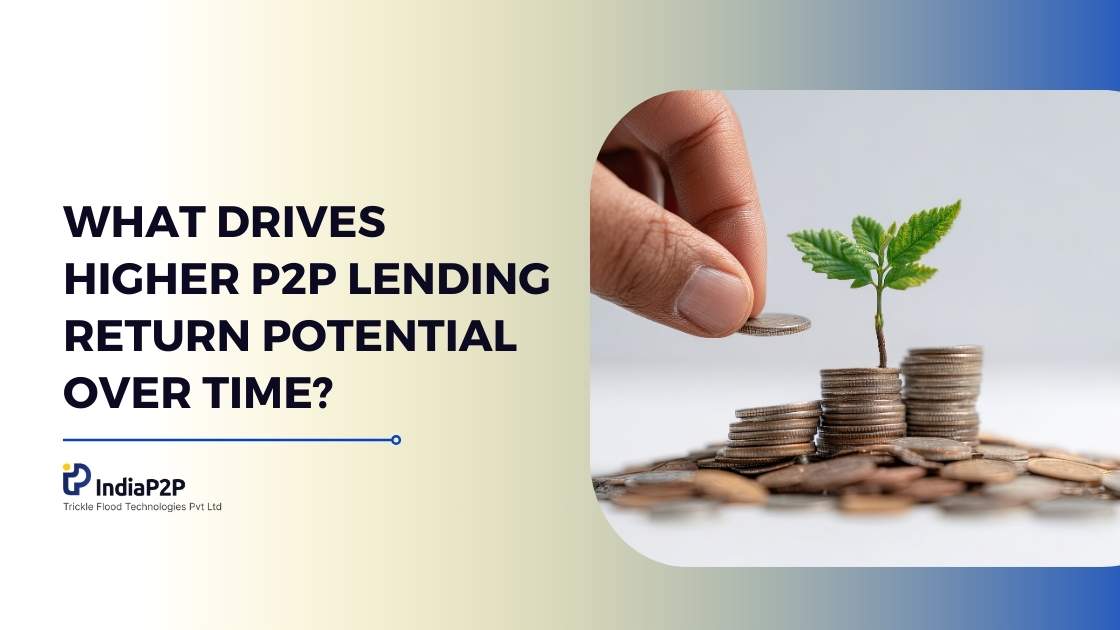Types of Return Every Investor Must Know About Before Investing Their Money

Why is it important to understand rates of return?
When someone wants to invest their hard-earned money, they look at how the investment has done in the past, i.e. returns. In simple terms, return means how much the investment has lost or gained in value over a certain period of time.
If you are new to investing, you might hear a lot of different terms for returns, like interest, ROI, IRR, APR, APY, etc.
Do you struggle to understand the meaning of different types of returns?
Some investors may know the terms but not the ideas behind them, and some may find the whole thing confusing.
It is very important to understand and know what these terms mean. By understanding the different concepts, you'll be able to make smart financial decisions that will help you take your investments to new heights and give you better returns in turn.
This article helps you figure out what the main differences are between the different types of returns starting from interest rate, CAGR, ROI, IRR, XIRR, APR, and APY.
Different Type of Returns Investors Must Know About
🔵 Interest Rate (Type of return)
Interest rate is the most prominent term used by financial institutions. The term is significant for the fact that the entire banking system is dependent on interest rates and derives its primary source of income from the same. In simpler terms, an interest rate is an amount that a lender charges over and above the principal loan amount.
Let's say you put ₹1 lakh into a bank's fixed deposit for three years at 5% interest. After the term of the deposit, which is 3 years, the bank will return the deposit amount plus ₹1,15,000 in interest. Such interest is referred to as a simple interest rate.
Now, let's talk about what compound interest rate (another type of return investors must know about) means. For a simple explanation, compound interest is interest that you earn on interest. For example, if your early deposit is based on compound interest, you will earn interest on both the initial principal and the interest that builds up over time. That is, the bank will give you ₹5,000 in interest in the first year, which is the same as simple interest. The returns start to change, though, in the second year, when you start earning more interest on the ₹5,000 you made in the first year. Look at the table below to see how your investment grows over time as interest is added to it.
It may be worth noting that the returns are higher when the compounding happens at a higher frequency.
🔵 CAGR (Rates of Return)
CAGR stands for compounding annual growth rate. CAGR is based on the idea of compound interest, which we talked about earlier. It is regarded as the best indicator to evaluate ways how different investments have performed over a period.
Investors can use the CAGR to compare how well their stocks or assets have done over time compared to other stocks or the market index (usually longer than a year). Let's say you put ₹15,000 into something in January 2018. Now, if you cash out the investment after 5 years, it's worth ₹25000. In this case, the CAGR comes out to be 8.88%.
🔵 Return on Investment (ROI)
Another type of return that every investor must know about is “Return on investment”. It is a simple mathematical formula that investors may use to determine the performance of their assets. ROI is calculated as net income/cost of investment multiplied by 100.
For example, if an investor invests ₹100 and receives ₹300 in return, his net profit is Rs. 200. Using the ROI formula, we can simply calculate the return on investment to be 200 percent.
While return on investment (ROI) is the simplest approach to immediately assess and explain the success of an investment, it does not take into consideration the time of cash flows. For example, a 200 percent return in two years is preferable to a 200 percent return over three years. ROI, on the other hand, fails to express such time disparities in returns.
🔵 What is IRR and XIRR? (Another type of return investors need to know about)
The IRR function represents the internal rate of return that an investor obtains on cash flows after deducting the discount rate. IRR may be thought of as the yearly rate of growth that an investment is predicted to create. IRR is useful for evaluating/comparing return on investment when cash flows are spread across various periods.
For example, calculating ROI or CAGR on SIP investments over a 36-month period is impossible unless each investment is broken up and treated individually. In such cases, when investments or cash flows are spread across numerous periods, IRR is a preferable way to describe returns.
Here's another example of the same.
|
Year |
Cashflows |
|
0 |
-100 |
|
1 |
10 |
|
2 |
10 |
|
3 |
110 |
|
IRR |
10% |
The extended internal rate of return, on the other hand, is denoted by XIRR. In order to correctly estimate the returns, XIRR takes into account not only the cash flows and discount rates but also the relevant dates. It is also a way for evaluating the return on investment when numerous transactions are taking place during the period of investment.
Let us also understand XIRR with a simple ₹100 example.
|
Data |
Cash flows |
|
1st January 2022 |
-100 |
|
1st July 2022 |
10 |
|
1st March 2023 |
10 |
|
1st January 2025 |
110 |
|
XIRR |
10.47% |
🔵 APR vs APY
APR and APY are the two principles used to compute investment interest. Both words reflect annual interest and are more accurate than interest rate or ROI alone.
APR stands for annual percentage rate, while APY stands for annual percentage yield. While both words seem to be confusing, the main distinction is that APY counts compound interest (within a one-year period), while APR does not.
Let's look at an example to help you understand. A credit card business may charge 1% each month in interest. As a result, the APR here is 12 percent (1 percent x 12 months). This is distinct from APY, which takes into account compound interest. Similarly, the annual percentage yield (APY) on a 1% rate of interest compounded monthly is 12.68%.
Here’s another example of an APR with 10%
|
Compound |
APR |
APY |
|
Yearly |
10% |
10% |
|
Semi-annually |
10% |
10.25% |
|
Quarterly |
10% |
10.38% |
|
Monthly |
10% |
10.47% |
As previously established, the shorter the time of compounding, the greater the profits received.
Conclusion
An investor should have a solid understanding of a number of aspects, including risks, rewards, and taxes, before investing his hard-earned money. Understanding the various types of returns is the first step in your investing path. We genuinely hope that this post has improved your understanding of different forms of returns. Happy investing!
Quick Summary on various types of returns
|
Return |
Pro’s |
Con’s |
|
Simple Interest / APR |
· Easy to understand and calculate. · Usually does not need any instrument to calculate returns. · Suitable for short term investments |
· Do not take into account compounding. · Not suitable for evaluating long term (>1 year) investments. |
|
Compound Interest / CAGR / APY |
· Good measure of return for longer tenure investments as it takes into account compound interest |
· Need instruments to calculate. |
|
ROI |
· Easy to calculate · Focuses on absolute returns |
· Do not consider duration of investment and time value of money · Do not consider compound interest |
|
IRR |
· Suitable for investments where cash flows (investments or returns) are spread over multiple periods. · Good measure of the time value of money |
· Ignore reinvestment returns · Assumes all periods as standard (not practical) · Need instruments to calculate |
|
XIRR |
· Same as IRR and also takes into account nonstandard time periods. |
· Ignore reinvestment returns · Need instruments to calculate |




